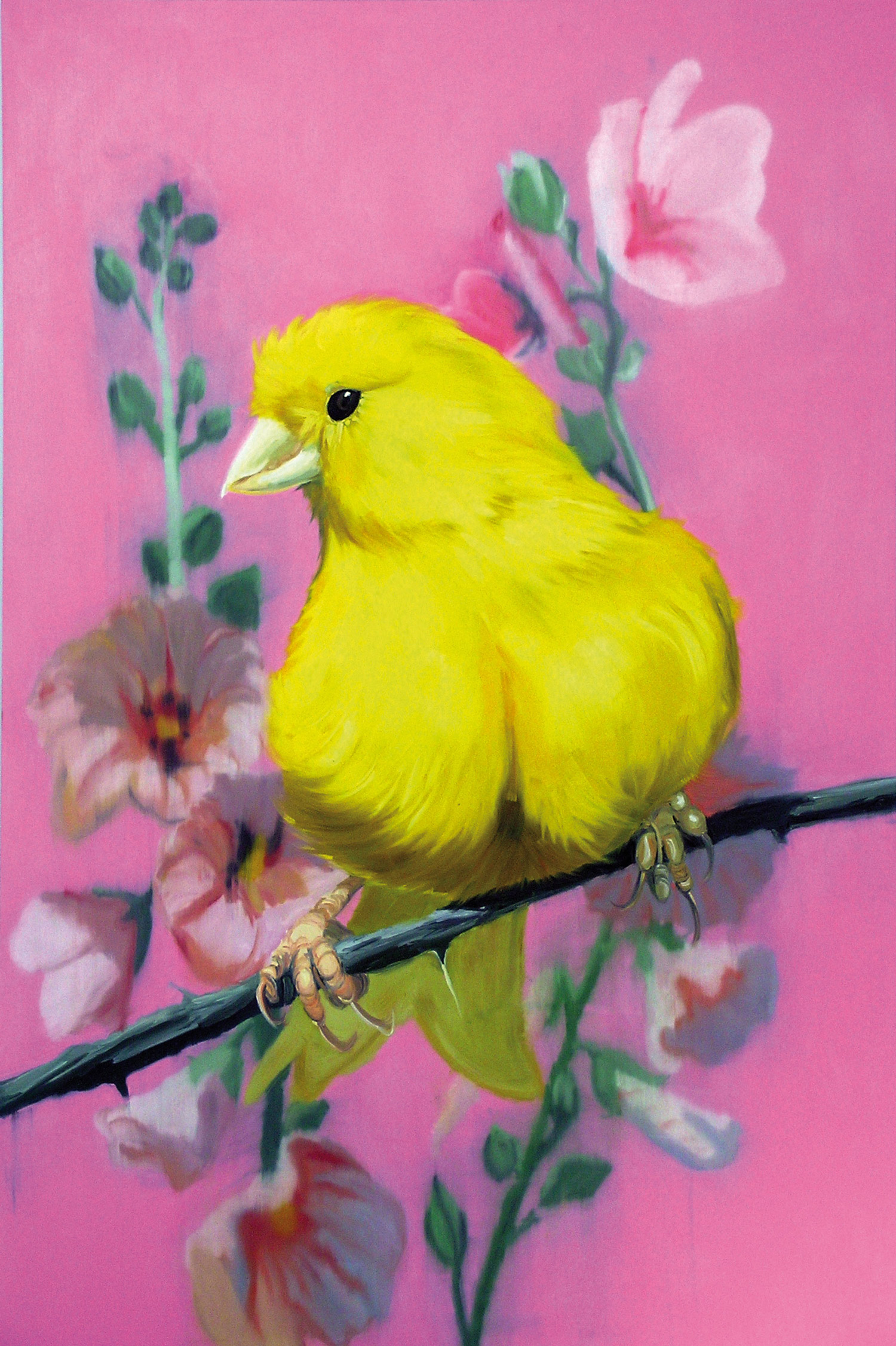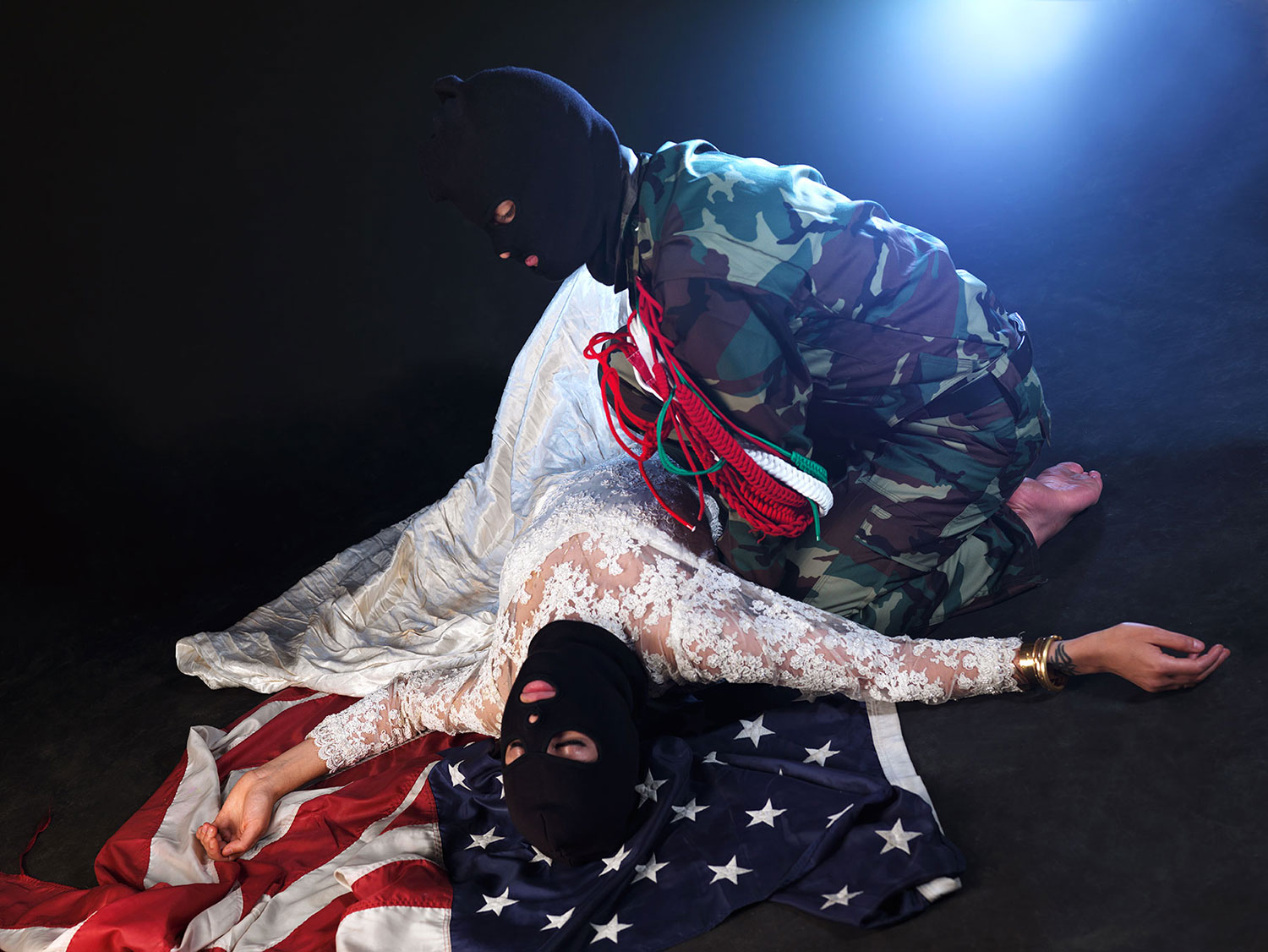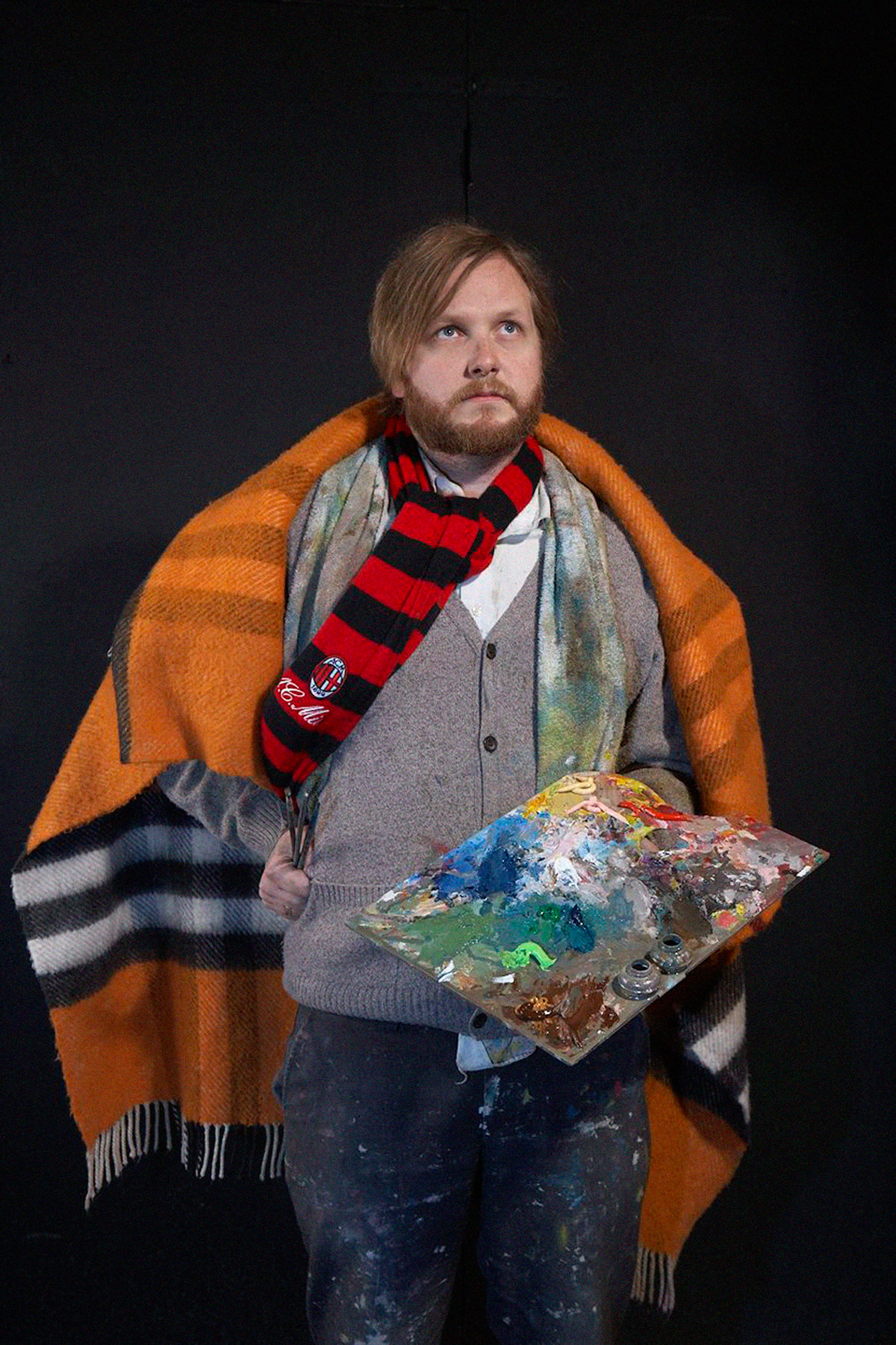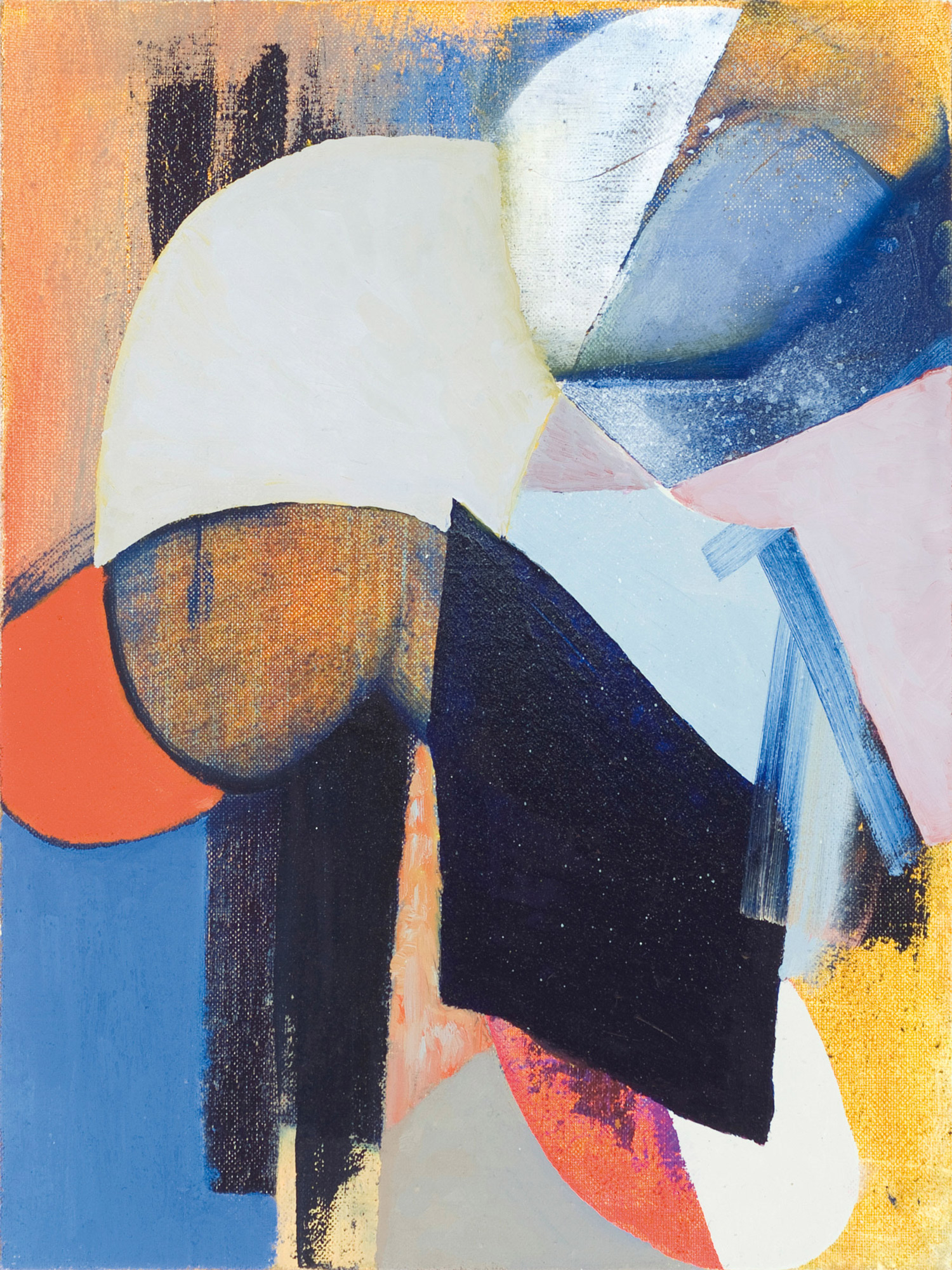
Six animations of circles, squares and right angles in motion are projected onto separate screens. Three color fields create a T-form, in which colored circles and black beams move around. The beams move from the right and a circle falls on the shaft of the T; it pushes itself from top to bottom, filling the space as it rolls along its track. Dancing, toppling, balancing forms, musical rhythms and surprising sequences of movement — that which cannot be planned will always be thought of. The signs are not fixed. Gerwald Rockenschaub developed this work in 2002 for the Sony Style Store in Berlin, which is a kind of display space and stage for electronic ephemera. The movements and rhythms of his work play with the visual atmosphere of the store.
Rockenschaub’s beginnings lie in so-called Neo-Geo painting, as it was understood as a counter development to figurative expressionistic painting within the gamut of postmodern art styles. At the beginning of the ’80s his work gave way to the production of very small oil paintings on canvas, which featured simplified geometric structures and pictogram-like symbols. The rigor and reduction of essential foundational elements and clear colorfulness tie together a constructivist tradition with associations that are exegetically known everyday things (eyes, fried eggs or record players). Rockenshaub occasionally combined these paintings into ensembles or groups where the single works did not play the central role, but rather the combination of single elements in a given room were privileged. This procedure refers to a practice that has become characteristic. The resulting sensuous effects of the single oil paintings in the particular exhibition situation posit a network of relations within the context in which “the cues of their meanings become freely separable and interchangeable.”
At this time punk played an important role in the German and Austrian art scenes. An immediacy of action came into the foreground, which attempted to enforce itself against the postulate of connoisseurship and the ideal of ‘professionalization.’ Artists tried to convey in their varied practices the creation of hierarchy between professional and amateur, actor and audience. Rockenschaub’s work is characterized by a conceptual synthetic distance and finds itself reflected in the further intellectual development of punk and new wave. Like many artists of the time, he played in a band, which consisted solely of artists, called Molto Brutto [Very ugly]. He was interested in fashion and design, creating record covers, as he occupied himself with basic questions of reception.
For him there is no autonomous artwork: “As long as artwork is sold and the gallery is left as an apparently sheltered sphere, it will fulfill and initiate a practical function in association with the decorative, social or representative.” The respective context in which one finds a work, the architectural conditions, but also the social operations, became the parameters for his artistic practice. In early 1984 Rockenschaub designed posters for an ad campaign for the Vienna Festwochen [Festival]. The black posters were all over the billboards of Vienna with clear, geometric letters that read “Augensex.” He explained how he came to the idea for the title through one of the first techno records, “Auralsex,” suggesting, “music is sex for the ears and art can, or should be, for the eyes.” Therefore adverts in the public sphere are “augensex.” In this example Rockenschaub points to an open concept of art, one that suggests that it is no longer an untouchable factotum for insiders to comprehend, but rather that art can expand to the general spectrum.

The collapse of the art market in 1987 had an apparent effect on the artistic strategies of Rockenschaub. The following year he began deejaying and producing minimal techno. Rockenschaub saw his activity as a DJ as equal to his artistic endeavors; for him “it was simply fun.” Despite their equality, he made a clear distinction between his careers as an artist and as a DJ. Whether he defined deejaying as a service or a commissioned performance, he saw his artistic practice as relatively autonomous, with no underlying ‘profitable’ aspect. He did however certainly find clear parallels between his exhibitions and the attributes of techno. In 1989 at Paul Mänz in Cologne he exhibited 36 colorless, acrylic glass records mounted on the wall and bound together with metal screws; the transparency didn’t show anything other than the strokes of the paint on the wall and the reflection of the viewer. The context of the works became the actual theme, not only in the architectural structure in which they were exhibited or the mechanisms of their presentation, but also in the perceptional behavior of the exhibition’s visitors. Through this charge between art and music he developed a sensibility for social and aesthetic operations in various contexts, which were conveyed in his artwork as a result of his activity with music.
Rockenschaub also took up the mechanical production forms of techno; he used materials that by all appearances followed technophiles and tried to arrive at the same stringent parameters. The general production process — its materials, forms and components — were frequently achieved in relation to a concrete space situation. His work and the plans for his installations arise through the aid of computer programs before the single components are given to technical specialists to complete.
A further example of how Rockenschaub made the parameters and framework of art a subject of discussion can be seen in his contribution to the 45th Venice Biennale in 1993. Inside the pavilion he installed scaffolding structures which visitors could walk up to a platform that extended to the other side of the room and walk down again. Visitors were therefore able to move freely between the floor and the window levels. One found that the scaffolding could be read as an object or a sculpture. However, while on the scaffolding structure itself, the pavilion and its architectural conditions presented themselves as the object of the exhibition. In this way the scaffolding set the parameters for how to view the exhibition. Unreachable atop the five-meter-high platform of the structure, were views of a garden through the windows, a reference to the contextual environment of the presentation, but also an extension of the possible sensory experiences and revaluation of the architectural conditions of the location.
Gerwald Rockenschaub aims to change the perception of architectural, social and cultural spaces. Following unapparent principles, he directs the view on events to their point of origin, in an attempt to make us grasp them in a new way. The architecture will be subtly encroached upon according the situation. The flow of movement will be driven, infrastructure made visible, hallways blocked, borders moved and perspectives newly oriented. Often reducing these encroachments or interventions with simple elements like curtains, cordon chains, color accents, stepstools or chairs, these are gestures that invite a new reading of the situation.

In 1994 at the Vienna Secession Rockenschaub placed six stools in which one could catch a glimpse out of the windows, interweaving the borders between the constructed space of the museum and the urban reality outside. In the main hall he showed prints with views of the city of Vienna in a hallway that led outdoors. The institution’s boundaries became macerated and permeable to the experiential reality it constitutes. Invited to Documenta 12 in 2007 to design an ‘education island,’ he realized his design in the style of a green and orange classroom, complete with chalkboard and school benches in the Aue-Pavillion. The school benches could accommodate around 20 people, who could follow the gallery guide’s statements and whose attention would be driven not on the artworks themselves, but rather on the gallery guide or the general surroundings of the fair. This was intended as a kind of tongue-in-check dig at the pedagogical claims which that particular Documenta adhered to.
This fine irony and playful humor often finds itself in the work of Rockenschaub, and is left to be read as a record of dissociation and reference to the conditions of contemporary art. His reductive, thought-out logic demands that we intensify our exhilaration when the subtle joke becomes visible. The sociologist Jörg Räwel sees humor in the possibility to observe observations: “Humor has the function to play with forms, to vary forms and to gain new forms that are the source for further variations and so on…” This playful approach is evident in the work of Rockenschaub despite the dry statements in his installations, inflatable objects, animations and foil pictures. It is a play with ambivalence, with possibilities but also the impossibilities of visual presentation.
Rockenschaub conceptualized the 1,680-square-meter façade of the Temporäre Kunsthalle Berlin based on this quote from Ludwig Wittgenstein: “You cannot build clouds and therefore the envisioned future will never be reality.” Two enormous white pixilated cloud forms rest upon the radiating blue painted on the walls of the temporary box-like Kunsthalle on Berlin-Mitte’s Schlossplatz. In two years the reconstructed façade of the old city castle will be completed and serve as the new hall of the Humboldt-Forum. Until that time however, Rockenschaub’s cloud logo will climb up the façade of this historically charged location. And once more he has posed to us a humorous question that alludes to the ambivalence of possibilities: “At what point do you begin to resolve the artfulness of art?” It is when it no longer relates to itself, when its context and conditional framework interact.





